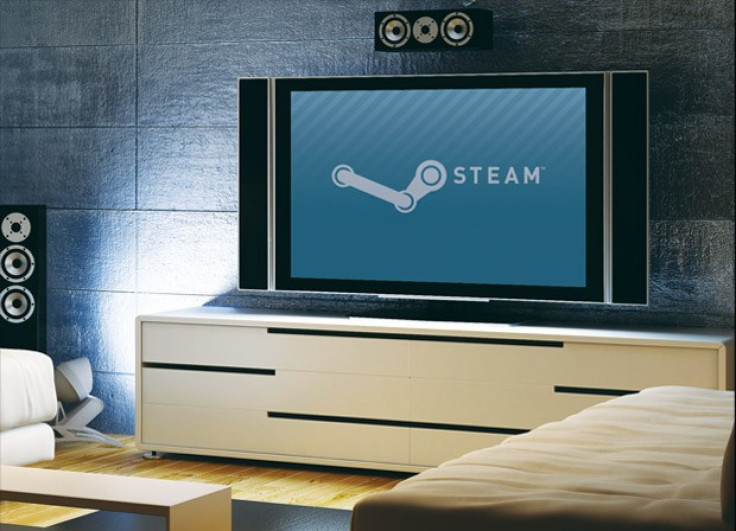Steam 'Big Picture Mode' Enters Beta: What This Means For Valve's Future Hardware

Following a slew of announcements about Valve Corporation expanding beyond game development and distribution into general software and hardware possibilities, Steam is officially releasing a beta version of its "Big Picture Mode" on Monday.
Announced nearly a month ago by the privately-held Seattle-based developer, the new version of Steam's acclaimed content distribution platform promises to free up the service from users' personal computers and integrate it with their television sets. Showing a sleek and innovative approach to a television-based user interface, the new version of Steam raises questions about the future of PC game development.
So far, most of the revealed changes made to Steam are largely on the design side, adjusting the user interface to better viewing with television sets. Moving past the standard QWERTY mode that is the primary text-input option for other consoles (and a disappointing one at that), "Big Picture Mode" instead uses a flower-shaped on-screen keyboard. Other features include standard shopping, browsing, and social networking functions similar to those offered in the PC version.
Speaking to the videogame website Kotaku, Valve's Greg Coomer, who led the small team at Valve that developed "Big Picture Mode," said that the developer felt "confident" in knowing "some things that customers want." Interestingly enough, all of these things described a dramatic departure from the personal computer-based gaming experience that Valve has excelled at offering since it was founded in 1996.
"They want a full-screen experience," Coomer said. "They want to be in the living room. They want to use a game controller. They wanna have a social gaming experience. And we have this platform that lets us ship a significant portion of that experience."
Given Valve's continued success as a PC game developer in a market that's become increasingly dominated by consoles, social media sites, and mobile technology, there's been a great deal of rumor-mongering about the company developing a console of its own to rival other industry players like Sony Corp.'s (NYSE: SNE) Playstation system, Microsoft Corp.'s (Nasdaq: MSFT) Xbox series, and to a lesser extent, Nintendo's (PINK: NTDOY) Wii.
Valve had previously stomped rumors of a possible "Steambox" console being in development, but when the company quietly turned its hiring attention towards hardware development earlier this month, fans paid attention. A move like this is not uncommon for Valve, which is notorious for long and mysterious development cycles for their software ("Half Life" players regularly protest the company to petition for any possible information on "Half Life 3" in what has become a cruel joke for fans and critics alike).
In today's announcement, Valve remained characteristically opaque, but admitted that the developer doesn't have a full plan for where "Big Picture Mode" is supposed to go exactly.
"What we really want is to ship [Big Picture mode] and then learn," Coomer continued in his interview with Kotaku. "So we want to find out what people value about that. How they make use of it. When they make use of it. Whether it's even a good idea for the broadest set of customers or not. And then decide what to do next."
Much of the gaming press has noted that whether Valve makes its own console or simply adjusts Steam to console viewing and playing standards, it is still taking on the console market either way. Kotaku framed it as an explicit competition in the headline itself: "watch out, consoles."
But Valve's love of Steam and its substantial indie cred (it was also revealed this weekend that the company staunchly resisted a buyout from Electronic Arts (Nasdaq: EA), one of the largest publicly-traded videogame developers and publishers in the world) may give these writers rose-tinted glasses. The bitter reality of PC gaming is that desktop hardware sales continue to plummet despite the resurgence of high-end Macbook imitations like Ultrabooks. Alienware, a subsidiary of the PC hardware company Dell Inc. (Nasdaq: DELL) that specializes in making high-end gaming specific PCs, has been forced to resort to building cheaper, smaller, pared-down versions of its famed towers. The "X51 Mini Gaming Desktop" that was released earlier this year even looks like the Xbox 360.
Valve may find a way to revolutionize PC gaming to help it become financially solvent once again. But if they do so with the "Big Picture Mode," the company will succeed by bending to the pressure of a marketplace that has, for better or worse, deemed their original hardware platform obsolete.
Coomer concluded that "it could be that the thing that really makes sense is to build the box that you're describing," addressing the rumors of a "Steambox" directly. But he reiterated that Valve doesn't have any "road map" yet for future development. Instead, the company is hoping to "learn a tremendous amount through this first release."
© Copyright IBTimes 2024. All rights reserved.












